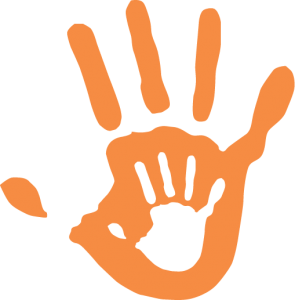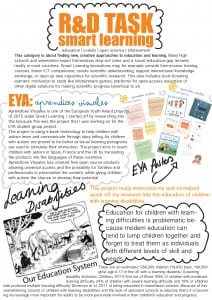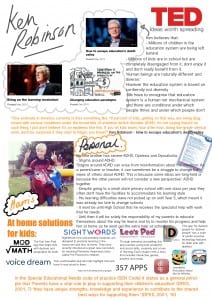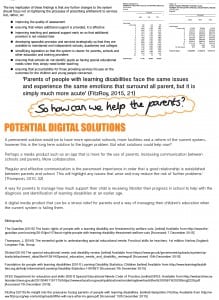Some Notes on Learning difficulties
Learning difficulties can affect all families, regardless of race, class or gender.
Therefore the audience of the project is diverse.
Learning difficulties are normally classifies as mild, moderate, severe or profound. Typically they are diagnosed with IQ tests, however they are not always a reliable or true indicator of ability. Perhaps a more realistic was to describe the level of disability would be to categorize it according to its effect on the individual. Although this may be more open to individual interpretation, it provides a greater insight into both current achievement and future potential.
The project will focus on this way of categorising by looking at the effects that the learning difficulty has on the individual child at home and in school to establish the severity of the learning difficulty and to find the best way of approaching education and helping the child. It will combine the efforts of the teacher at school and the parent at home to establish a communication about the child’s requirements based of their behaviour.
Brief descriptions on the level of help that children of each learning difficulty severity will require (although subject to circumstances):
Children with a mild learning difficulty will need help dealing with only difficult situations. Moderate are capable of understanding and carrying out routine tasks but will generally require supervision and support on a daily basis. Severe learning difficulties have a further impact on an individual’s ability and will require constant supervision in order to succeed. Those with a profound disability will have a lower intellectual capacity and will require the most care and attention. They often require 24-hour care in all areas of life.
Effects of a learning disability on a child:
Intellectual and cognitive ability
- Lack of ability to learn, generalise and retain information
- No two children will learn the same, even with the same diagnosis
- Developmental leaning delay
- Struggles to apply basic information to multiple tasks
Behaviour
- Ability to establish and maintain friendships is effected
- Ability to develop new ideas and concepts slower
- Poor social judgement, impulsive behaviour, inappropriate behaviour in situations
- Hyperactivity and easily confused or frustrated.
- Overly excitable in-group play.
- Failure to see consequences of actions
- Overly gullible
- Easily distracted
These effects will be a significant part of the project and will help determine how the child is coping with their learning difficulty.
Research indicates that parental reaction to the diagnosis of learning disabilities is more pronounced than in any other area of exceptionality.
How parents can be affected:
- Denial
- Blame
- Fear
- Envy
- Mourning
- Bargaining
- Guilt
- Isolation
- flight
Pointers for parents of children with learning disabilities:
- Take the time to listen to your children as much as you can (really try to get their “Message”).
- Love them by touching them, hugging them, tickling them, wrestling with them (they need lots of physical contact).
- Look for and encourage their strengths, interests, and abilities. Help them to use these as compensations for any limitations or disabilities.
- Reward them with praise, good words, smiles, and pat on the back as often as you can.
- Accept them for what they are and for their human potential for growth and development. Be realistic in your expectations and demands.
- Involve them in establishing rules and regulations, schedules, and family activities.
- Tell them when they misbehave and explain how you feel about their behavior; then have them propose other more acceptable ways of behaving.
- Help them to correct their errors and mistakes by showing or demonstrating what they should do.
- Don’t nag!
- Give them reasonable chores and a regular family work responsibility whenever possible.
- Give them an allowance as early as possible and then help them plan to spend within it.
- Provide toys, games, motor activities and opportunities that will stimulate them in their development.
- Read enjoyable stories to them and with them. Encourage them to ask questions, discuss stories, tell the story, and to reread stories.
- Further their ability to concentrate by reducing distracting aspects of their environment as much as possible (provide them with a place to work, study and play).
- Don’t get hung up on traditional school grades! It is important that they progress at their own rates and be rewarded for doing so.
- Take them to libraries and encourage them to select and check out books of interest.
- Have them share their books with you.
- Provide stimulating books and reading material around the house.
- Help them to develop self-esteem and to compete with self rather than with others.
- Insist that they cooperate socially by playing, helping, and serving others in the family and the community.
- Serve as a model to them by reading and discussing material of personal interest. Share with them some of the things you are reading and doing.
- Don’t hesitate to consult with teachers or other specialists whenever you feel it to be necessary in order to better understand what might be done to help your child learn.
The project will try to give parents more peace of mind when going through the diagnosis process and reduce some of the effects that it can bring.
Teachers, Parents and carers of children with learning difficulties will, in some cases, need to rethink all they have learned about childcare and development. Patience and tolerance will be tested; teachers can often become easily frustrated which teaching the simplest of tasks. However the smallest achievements, which perhaps would go unnoticed if accomplished by the non-disabled child, will bring joy, excitement and celebration.
The project will focus on the positive rather than negative, encouraging progress from the child and rewarding achievements whilst also highlighting areas of improvement and future progress. This will make the outcome of the project more of an enjoyment to use and less of a chore.
http://childdevelopmentinfo.com/learning/learning_disabilities/








